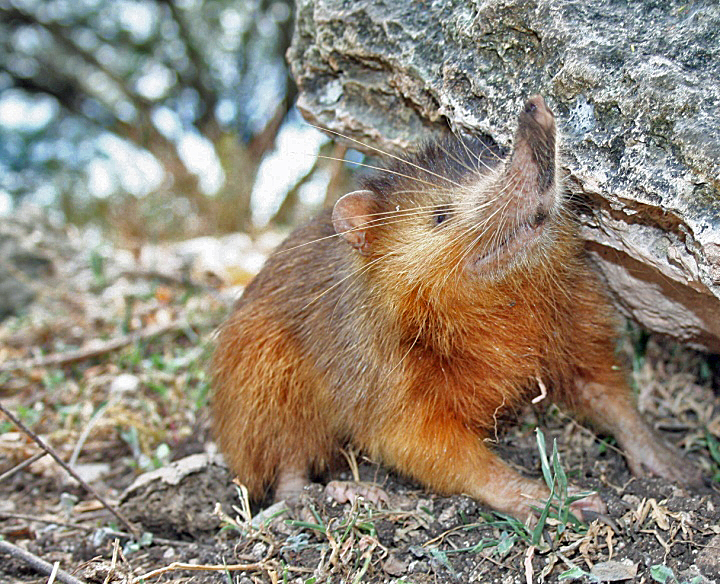Cuban solenodon
(Solenodon cubanus)

Description
The Cuban solenodon, or almiquí (Atopogale cubana), is a species of eulipotyphlan endemic to Cuba. It is the only species in the genus Atopogale. It belongs to the family Solenodontidae along with a similar species, the Hispaniolan solenodon (Solenodon paradoxus). The solenodon is unusual among mammals in that its saliva is toxic and acts as venom. Although formerly classified in the genus Solenodon, phylogenetic evidence supports it being in its own genus, Atopogale. Since its discovery in 1861 by the German naturalist Wilhelm Peters, only 36 had ever been caught. By 1970, some thought the Cuban solenodon had become extinct, since no specimens had been found since 1890. Three were captured in 1974 and 1975, and subsequent surveys showed it still occurred in many places in central and western Oriente Province, at the eastern end of Cuba; however, it is rare everywhere. Prior to 2003, the most recent sighting was in 1999, mainly because it is a nocturnal burrower, living underground, and thus is very rarely seen. The Cuban solenodon found in 2003 was named Alejandrito. It had a mass of 24 oz (0.68 kg) and was healthy. It was released back into the wild after two days of scientific study were completed. With small eyes, and dark brown to black hair, the Cuban solenodon is sometimes compared to a shrew, although it most closely resembles members of the family Tenrecidae, of Madagascar. It is 16-22 in (41-56 cm) long from nose to tail-tip and resembles a large brown rat with an extremely elongated snout and a long, naked, scaly tail. Willy Ley wrote in 1964 that the Cuban solenodon was, if not extinct, among "the rarest animals on earth". It was declared extinct in 1970, but was rediscovered in 1974. Since 1982, it has been listed as an endangered species, in part because it only breeds a single litter of one to three in a year, and because of predation by the invasive small Asian mongoose introduced by humans. The species is also thought to be threatened by deforestation, habitat degradation due to logging and mining, and predation by feral cats and dogs. It is endemic to mountainous forests in eastern Cuba, in the provinces of Holguín, Guantánamo, and Santiago de Cuba. It is nocturnal and travels at night along the forest floor, looking for insects and small animals on which to feed. This species has a varied diet. At night, they search the forest floor litter for insects and other invertebrates, fungi, and roots.
Taxonomic tree:







